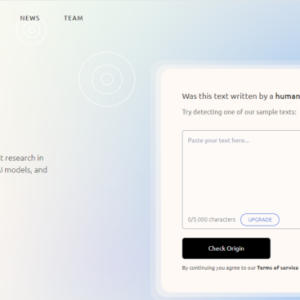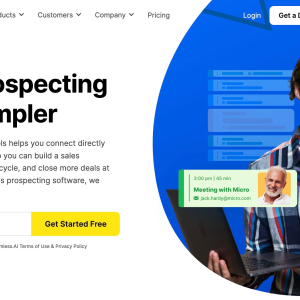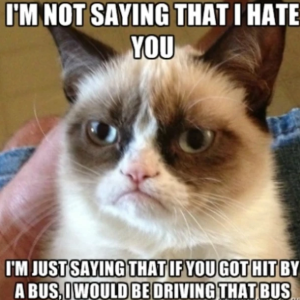Artificial Intelligence (AI) has revolutionized the way images are used on social media platforms, impacting user engagement in profound ways. With the ability to analyze and interpret images at an unprecedented speed and accuracy, AI technology has enabled brands and individuals to create visually compelling content that resonates with their audience. From personalized recommendations to real-time image recognition, AI has transformed the way users interact with images on social media, ultimately driving higher levels of engagement and interaction. In this article, we will explore the various ways in which AI images are shaping social media engagement and discuss the implications for brands and users alike.
- 3 Best AI Tools for Ads Marketers Should Be Aware Of
- Anyword Review: Is It The Best AI Writing Assistant For Copywriters?
- ChatGPT Growth: 8 Powerful Findings From Its Meteoric Rise
- The Biggest Issues with Artificial Intelligence in Marketing Content
- 7 Great LinkedIn Headline Generator Options to Revamp Your Profile
Visuals play a huge role in how content is perceived and engaged with on social media platforms. As artificial intelligence technologies continue to grow and be refined, the generation of AI images has followed suit and is now popping up everywhere.
You are viewing: The Impact of AI Images on Social Media Engagement
This naturally has sparked many debates not just for the ethical dilemma surrounding AI art, but also about their effectiveness compared to human-created visuals.
In this post, we’ll look at whether AI-generated images yield more or less engagement than their human-made counterparts.
Get My Free Marketing Plan
Scope of the AI- vs Human-Generated Images Study
A study by Neil Patel focused on 304 Instagram accounts to determine the engagement differences between AI-generated and human-generated images. This analysis involved meticulously reviewing tens of thousands of posts to ensure accuracy in data collection. To qualify for the study, accounts needed to explicitly label images as AI-generated, which was crucial for clear comparison.
Methodology overview:
- Initial Data Pool: Tens of thousands of images were scraped from various Instagram accounts.
- Selection Criteria: Images were specifically chosen from accounts that labeled their visuals as either AI-generated or human-created.
- Engagement Metrics: Likes and comments were the primary metrics used to gauge engagement.
Findings from the Study
The results revealed that AI-generated images averaged 41 likes, while human-generated images averaged 66 likes (about 61% stronger than AI images).
In terms of comments, AI-generated posts received an average of 2.3 comments per post, compared to 3.1 for human-generated posts (about 35% stronger than AI Images).
See more : Graphic Design AI Tools: Top 10 Game-Changers in the Creative Industry
These findings suggest that, at least in the context of Instagram, human-generated images tend to engage users more effectively than those created by AI.

Analysis of Engagement Discrepancies
Several factors may contribute to the observed discrepancies in engagement.
For one, human-generated images often contain elements of creativity and personal touch that may resonate more deeply with viewers. Secondly, users might perceive human-created content as more authentic or relatable. And, finally, there might be subtle differences in quality and aesthetics that affect user engagement.
Challenges in the Study
A couple of quick things to note about the study:
- Bias and Limitations: The reliance on self-reported data from accounts introduces potential bias, as the study assumes the accuracy of these declarations.
- Comparative Analysis: The study only compared engagement within accounts that provided both types of content, which helped mitigate issues related to varying follower counts and influence levels.
Conducting such a study involves significant challenges. Identifying whether an image is AI-generated solely based on account declarations may introduce biases. Furthermore, the tools available to detect AI-generated content are not yet fully reliable, which complicates the data collection process.
However, we still believe the data from the analysis is exemplative of the larger picture here, which is that AI images still lack that flare that makes human-generated images resonate stronger with people.
Side note, it’s getting more and more interesting to see how infrequently people will notice that an image is actually AI-generated at all. The New York Times created this testing tool so you yourself can gauge your ability to detect AI images versus human-made images.
For example, this one may seem a little obvious:

But how about this one?

Implications for Marketers and Content Creators
The insights from this study are invaluable for marketers and content creators. Understanding the impact of AI-generated versus human-generated images can help refine strategies for content creation and audience engagement.
Here are a few points that marketers should be mindful of when it comes to AI images:
- Content Planning: For higher engagement, it may be beneficial to lean towards human-generated images, especially in campaigns aiming for deep user interaction.
- Audience Perception: Marketers should consider how their audience perceives AI-generated content and adjust their strategies accordingly.
- Tool Utilization: Leveraging AI in content creation should be balanced with human oversight to make sure the content remains relatable and engaging.
Future Outlook on AI Images
As AI technology advances, the capabilities of AI-generated images are likely to improve, potentially closing the gap in engagement levels. Ongoing research and experimentation will be crucial in understanding the evolving dynamics between AI-generated content and user engagement.
While AI images are a promising approach to creative generation in the arsenal of digital content makers, the current evidence suggests that human creativity still holds a significant edge in engaging social media audiences — at least for now, of course. There’s a very real probability that AI solutions supplant human ability entirely in the next 3-5 years or so.
Our encouragement for you is to stay on top of the tools (like Midjourney and DALL-E) that are helping marketers generate AI images. Knowing the full breadth of their capability will give you a keen awareness of how they can enhance human content generation, ultimately optimizing your engagement and reach on social media platforms.
Get My Free Marketing Plan
For more insights and lessons about marketing, check out our Marketing School podcast on YouTube.
That’s a wrap on “The Impact of AI Images on Social Media Engagement” We hope you’ve found a trove of useful insights and fresh perspectives. Your opinions and ideas matter to us—join the conversation below and share your take! Hungry for more tech insights? Dive into our diverse collection of articles where innovation meets practicality. Discover More AI Softwares.
Stay in the loop with the latest in AI and tech – your journey into the digital future continues at duanetoops.com.
#Impact #Images #Social #Media #Engagement
Source: https://duanetoops.com
Category: AI





